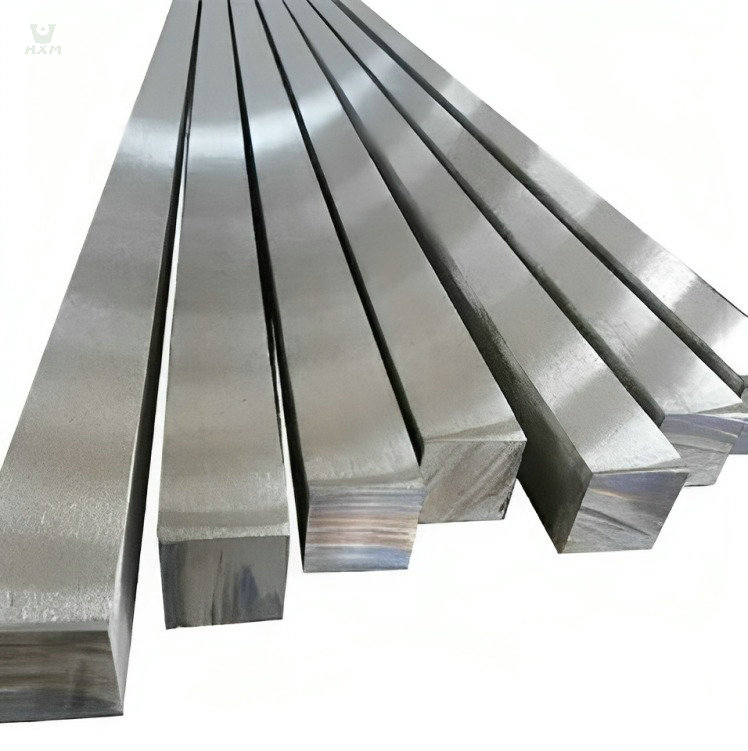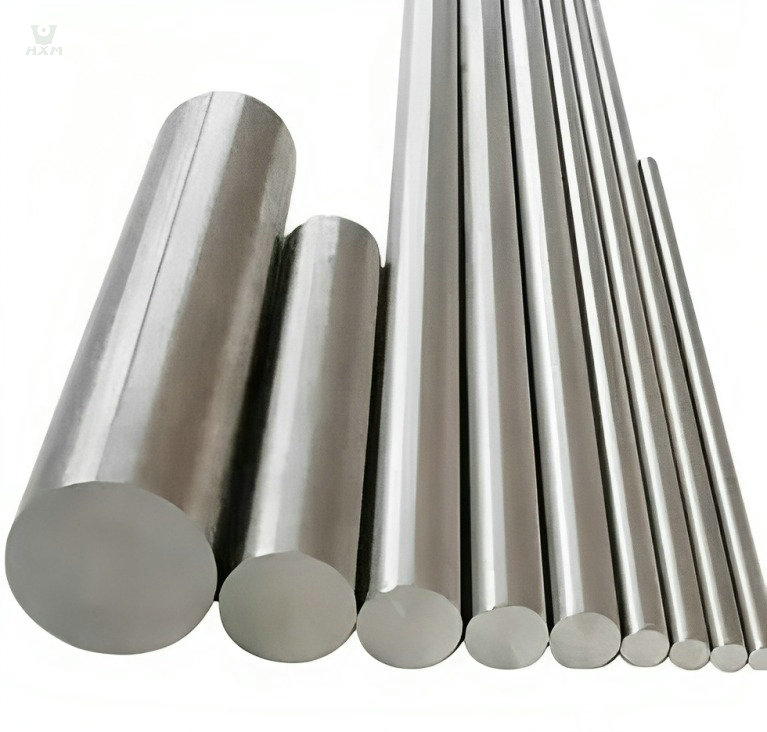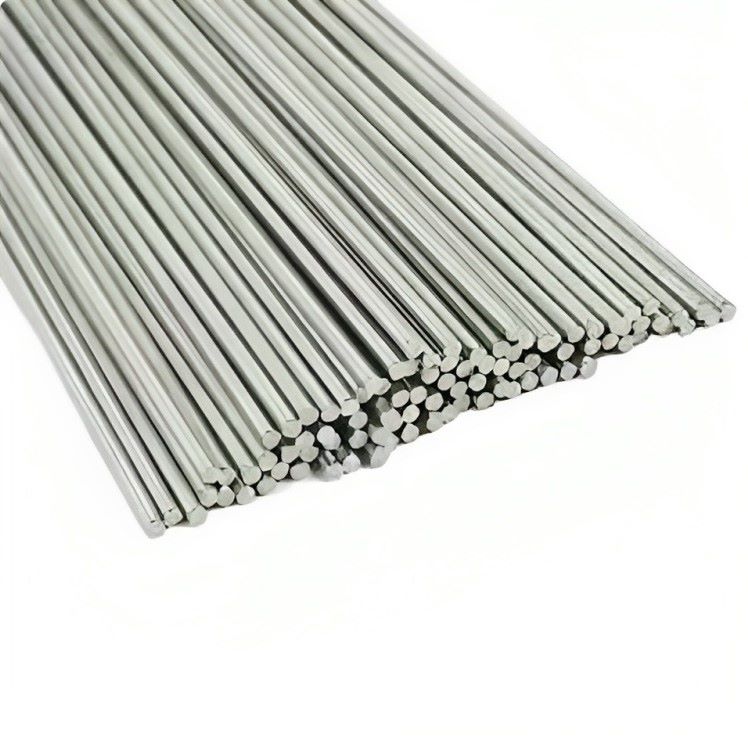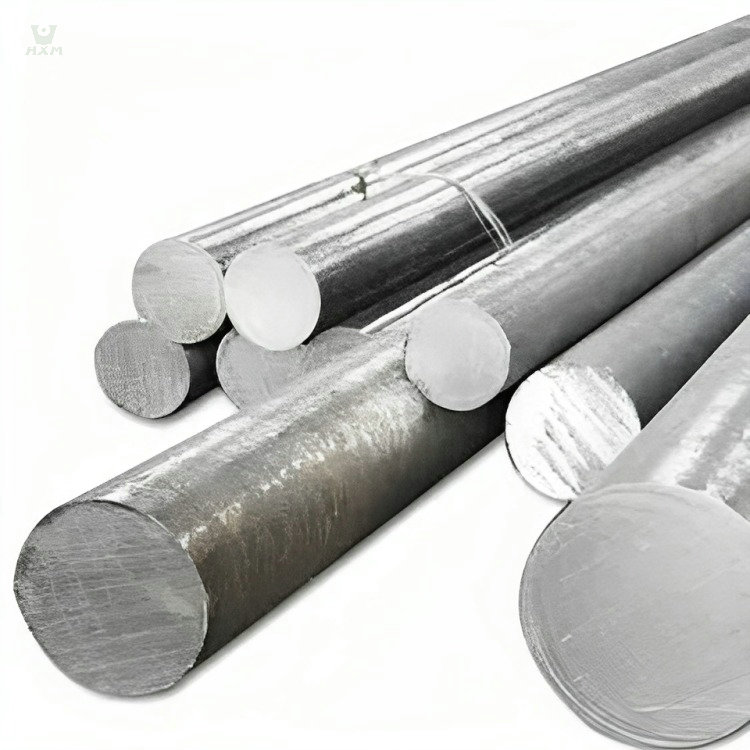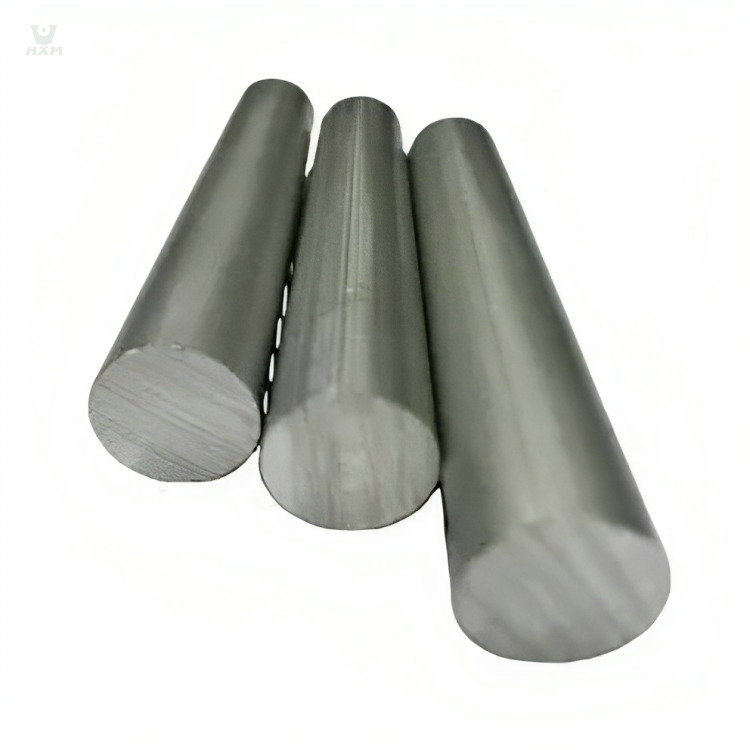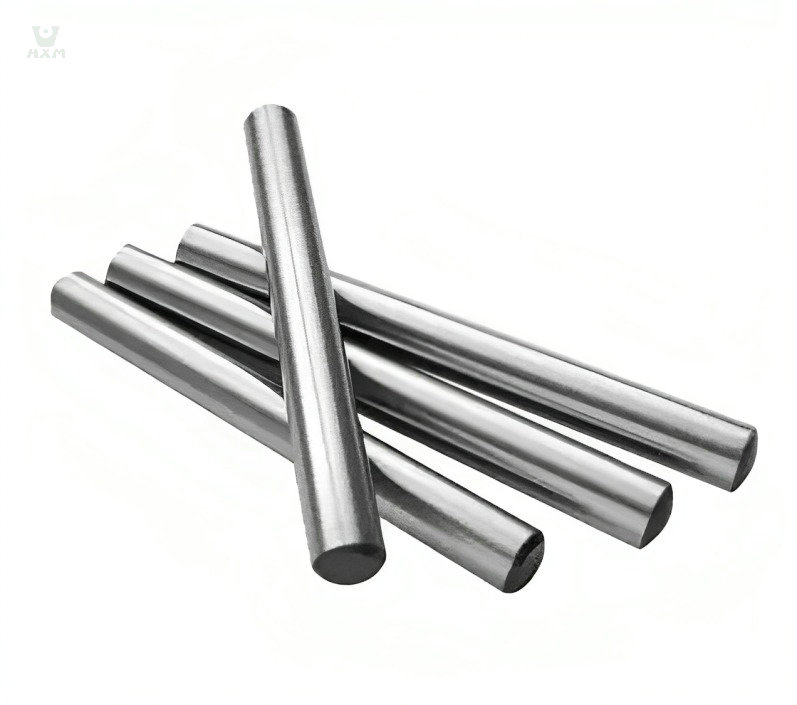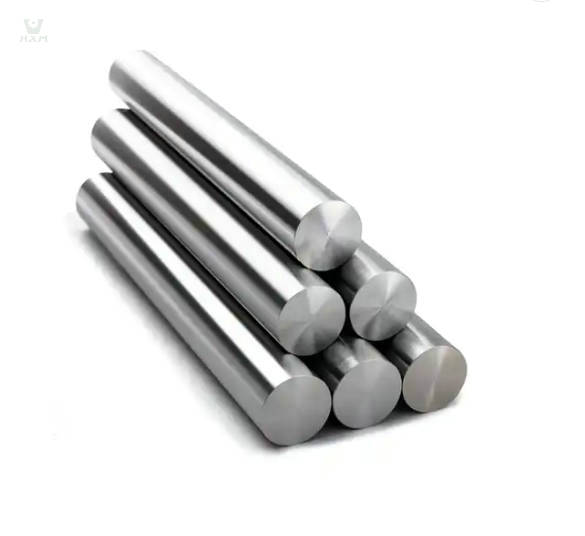
347 Stainless Steel Bar Supplier In China
Diameter: 3mm-480mm, 1/8″ to 2 1/4″
Standard: GB1220, ASTM A484/484M, EN 10060/ DIN 1013 ASTM A276, EN 10278, DIN 671
Shape: round, flat, square, angle, hexagonal
Finish: Black, NO.1, mill finish, cold draw, H9, H11
Product Description Of 347 Stainless Steel Bar
The 347 stainless steel bar is a high-quality austenitic stainless steel with exceptional characteristics. It is composed of a maximum of 0.08% carbon, 17% to 19% chromium, a maximum of 2% manganese, 9% to 13% nickel, a maximum of 1% silicon, and traces of phosphorus and sulfur. Additionally, it contains 1% to 10% niobium and tantalum, with the remainder being iron.
The 347 stainless steel bar offers a range of advantages. Firstly, it exhibits excellent intergranular corrosion resistance when exposed to temperatures within the range of 800°F to 1500°F, making it highly suitable for high-temperature applications. Secondly, it boasts high strength and durability, allowing it to withstand various stresses and pressures. Moreover, it demonstrates outstanding resistance to corrosion, effectively resisting oxidation, acidic, and alkaline environments. Furthermore, the 347 stainless steel bar is easily weldable and can be cut to any desired length, enhancing its versatility.
Due to its exceptional properties, the 347 stainless steel bar finds extensive application in the automotive industry and other sectors. With its round cross-sectional shape, it is ideal for manufacturing components, connectors, and support structures. Whether in engine components exposed to high temperatures or in pipelines and valves within chemical and petroleum industries, the 347 stainless steel bar delivers reliable performance and durability.
In summary, the 347 stainless steel bar is a top-quality material with outstanding characteristics. Its high strength, corrosion resistance, and ability to withstand high temperatures make it a preferred choice in various industries. Whether in the automotive sector or other fields, the 347 stainless steel bar meets diverse requirements, providing reliable and long-lasting solutions.
specification Of 347 Stainless Steel Bar
Chemical Composition Of 347 Stainless Steel Bar
| Element | Composition Range (%) |
|---|---|
| Carbon | Up to 0.08 |
| Chromium | 17 – 19 |
| Manganese | Up to 2 |
| Nickel | 9 – 13 |
| Silicon | Up to 1 |
| Phosphorus | Trace amounts |
| Sulfur | Trace amounts |
| Niobium and Tantalum | 1 – 10 |
| Iron | Remaining balance |
physical property Of 347 Stainless Steel Bar
| Property | Value |
|---|---|
| Density | 7.93 g/cm³ |
| Melting Point | 1398 – 1446°C |
| Electrical Conductivity | 1.03 × 10^6 S/m |
| Thermal Conductivity | 16.3 W/m·K |
| Specific Heat Capacity | 500 J/kg·K |
| Elastic Modulus | 193 GPa |
| Poisson’s Ratio | 0.30 |
| Tensile Strength | 515 MPa |
| Yield Strength | 205 MPa |
| Elongation | 40% |
| Hardness (Brinell) | 201 HB |
mechanical property Of 347 Stainless Steel Bar
| Property | Value |
|---|---|
| Tensile Strength | 515 MPa (74,700 psi) |
| Yield Strength | 205 MPa (29,800 psi) |
| Elongation | 40% |
| Modulus of Elasticity | 193 GPa (28,000 ksi) |
| Hardness (Brinell) | 201 HB |
| Hardness (Rockwell B) | 95 HRB |
| Impact Strength | 100 J (74 ft-lb) |
| Shear Strength | 310 MPa (45,000 psi) |
| Fatigue Strength | 210 MPa (30,500 psi) |
| Young’s Modulus | 193 GPa (28,000 ksi) |
| Poisson’s Ratio | 0.30 |
features Of 347 Stainless Steel Bar
The chemical composition of 347 stainless steel bar is carefully engineered to provide its desired properties. It consists of various elements in specific proportions, ensuring the material’s performance and characteristics. Here is a detailed explanation of the chemical composition:
Carbon (C): The maximum carbon content in 347 stainless steel bar is 0.08%. Carbon contributes to the material’s strength and hardness but needs to be controlled to prevent detrimental effects on its corrosion resistance.
Chromium (Cr): The chromium content in 347 stainless steel bar ranges from 17% to 19%. Chromium is a key element that provides excellent corrosion resistance, especially in oxidizing environments. It forms a protective oxide layer on the surface of the steel, preventing further corrosion.
Manganese (Mn): The maximum manganese content is 2%. Manganese is added to improve the material’s hot working properties and enhance its strength and hardenability.
Nickel (Ni): The nickel content in 347 stainless steel bar ranges from 9% to 13%. Nickel enhances the material’s corrosion resistance, ductility, and toughness, especially at low temperatures.
Silicon (Si): The maximum silicon content is 1%. Silicon is added to deoxidize the steel and improve its resistance to oxidation and scaling at elevated temperatures.
Phosphorus (P) and Sulfur (S): 347 stainless steel bar contains traces of phosphorus and sulfur. These elements are typically considered impurities, and their presence is minimized to ensure the material’s purity and improve its mechanical properties.
Niobium (Nb) and Tantalum (Ta): 347 stainless steel bar contains 1% to 10% of niobium and tantalum. These elements provide stabilization against sensitization and intergranular corrosion, particularly when exposed to high temperatures. They form carbides, preventing the formation of chromium carbides that can lead to intergranular corrosion.
Iron (Fe): Iron is the main component of 347 stainless steel bar, making up the remaining balance after considering the percentages of the above elements. Iron provides the basic matrix for the alloy and contributes to its mechanical strength.
By carefully controlling the composition of these elements, 347 stainless steel bar achieves a balance of properties, including excellent corrosion resistance, high-temperature stability, strength, and weldability, making it suitable for various applications.
The corrosion resistance of 347 stainless steel bar is primarily attributed to its unique composition and the formation of stable oxide layers on its surface. Here is a detailed explanation of its corrosion resistance at elevated temperatures:
Intergranular Corrosion: Intergranular corrosion refers to the attack along the grain boundaries of a material. 347 stainless steel bar exhibits excellent resistance to intergranular corrosion when exposed to temperatures within the range of 800°F to 1500°F (427°C to 816°C). This temperature range is critical as it can lead to the precipitation of chromium carbides, which can cause sensitization and subsequent intergranular corrosion in other stainless steel grades. However, the addition of niobium and tantalum in 347 stainless steel forms stable carbides, preventing the formation of chromium carbides and preserving the material’s intergranular corrosion resistance.
Chromium Oxide (Cr2O3) Layer: Chromium is a key element in stainless steel that forms a passive oxide layer (mainly Cr2O3) on the surface when exposed to oxygen. This oxide layer acts as a barrier, protecting the underlying material from further corrosion. In the case of 347 stainless steel, the chromium content (17% to 19%) is optimized to promote the formation of a stable and protective oxide layer, enhancing its corrosion resistance.
High-Temperature Exposure: The excellent intergranular corrosion resistance of 347 stainless steel bar within the specified temperature range (800°F to 1500°F) is particularly important for applications in high-temperature environments. These can include heat exchangers, furnace parts, and other equipment subjected to elevated temperatures. The material’s resistance to intergranular corrosion ensures its integrity and longevity, even in aggressive environments at high temperatures.
Sensitization Prevention: Sensitization refers to the loss of corrosion resistance along the grain boundaries due to the precipitation of chromium carbides. The addition of niobium and tantalum in 347 stainless steel prevents sensitization by forming stable carbides with these elements. This avoids the depletion of chromium in the matrix, preserving the material’s corrosion resistance and intergranular integrity.
Overall, the combination of optimized composition, stable oxide layer formation, and carbide stabilization make 347 stainless steel bar highly resistant to intergranular corrosion when exposed to temperatures within the specified range. This provides reliability and durability in demanding high-temperature applications where corrosion resistance is crucial.
347 stainless steel bar is available in various shapes and sizes to meet different requirements and applications. The shape and size options are determined by the manufacturing processes and the intended use of the stainless steel bar. Here is a detailed explanation of the shape and size versatility of 347 stainless steel bar:
Shape: 347 stainless steel bar typically has a round cross-sectional shape, which is the most common and widely available form. The round shape offers excellent versatility and ease of handling. It allows for uniform distribution of stress and facilitates machining, welding, and other fabrication processes. The round shape is suitable for applications where rotational symmetry and structural integrity are important.
Size: 347 stainless steel bar comes in various sizes, including diameter and length, to accommodate different design requirements. Diameter is a crucial dimension and is typically specified in inches or millimeters. The diameter determines the strength, load-bearing capacity, and overall stability of the bar. Common diameters range from small sizes, such as 1/8 inch (3.175 mm), to larger sizes, such as 1 inch (25.4 mm) or more. The specific diameter chosen depends on the intended application and the desired mechanical properties.
Length: The length of 347 stainless steel bar can be customized to suit specific needs. It can be supplied in standard lengths or cut to custom lengths, depending on the customer’s requirements. Standard lengths are often multiples of a specific size, such as 12 feet (3.66 meters) or 6 meters, but shorter or longer lengths can be obtained as needed. Custom lengths allow for efficient material utilization and minimize waste during fabrication.
Surface Condition: 347 stainless steel bar is typically supplied with a straight or slightly curved surface. The surface is often smooth and free from defects to ensure optimal performance and ease of handling during fabrication. The surface condition can also be further enhanced through various finishing processes,such as polishing or grinding, to achieve specific aesthetic or functional requirements.
Cut-to-Length Capability: 347 stainless steel bar offers the advantage of being easily cut to any desired length. This flexibility allows for precise customization and minimizes material waste. The bar can be cut using various methods, including sawing, shearing, or laser cutting, depending on the specific requirements and the available equipment.
The shape and size options available for 347 stainless steel bar provide versatility and adaptability to different applications. Whether it’s for structural components, machine parts, or other specific uses, the ability to select the appropriate shape and size ensures that the stainless steel bar can be efficiently integrated into various designs and manufacturing processes.
application Of 347 Stainless Steel Bar
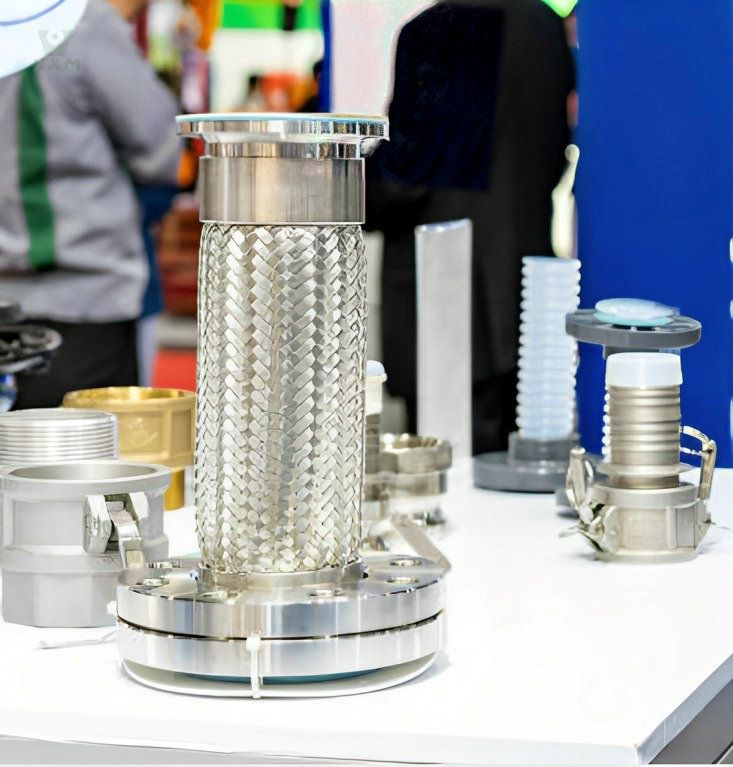
Expansion joints
When it comes to expansion joints that need to withstand high temperatures and pressures, 347 stainless steel bar is a common material choice. Expansion joints are used in piping systems to absorb length changes due to thermal expansion and contraction. In high-temperature environments, 347 stainless steel bar exhibits excellent heat resistance, able to withstand temperature changes without degradation. Additionally, due to its corrosion resistance, it is able to be used for extended periods of time in harsh operating environments without suffering.
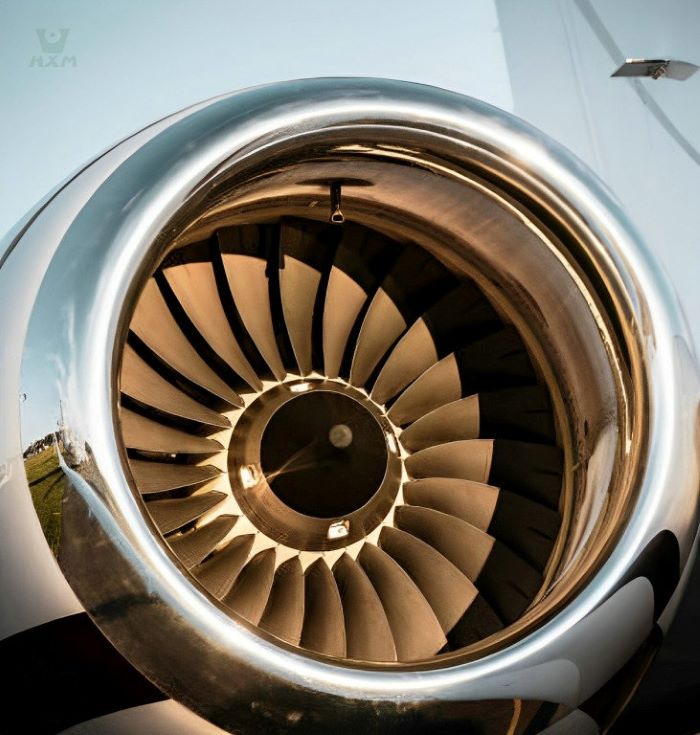
Aircraft collector rings
Aircraft collector rings are important components in aircraft engines that require materials with high temperature and corrosion resistance. 347 stainless steel bar is widely used in the manufacture of aircraft collector rings due to its excellent heat and corrosion resistance. This material is able to withstand high temperatures and pressurized environments while maintaining its strength and structural integrity, ensuring reliable engine operation.
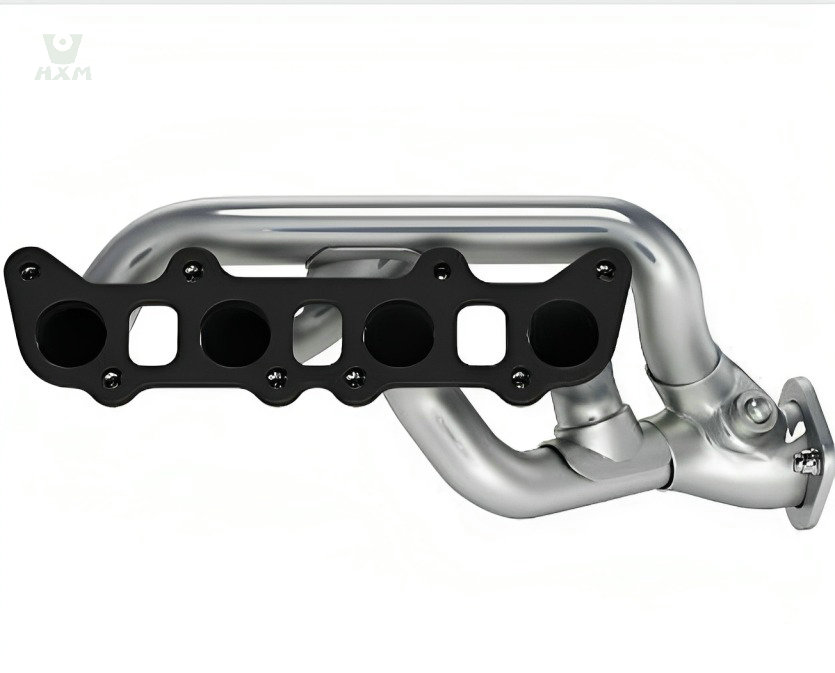
exhaust manifold
An exhaust manifold is an important component used in an engine's exhaust system. Due to their nature of exposure to high temperature exhaust gases, exhaust manifolds need to be able to withstand high temperatures and corrosion. 347 stainless steel bar excels in this regard, withstanding the corrosion and thermal stresses of high temperature environments while maintaining structural stability. This makes 347 stainless steel bar ideal for the manufacture of high performance exhaust manifolds.
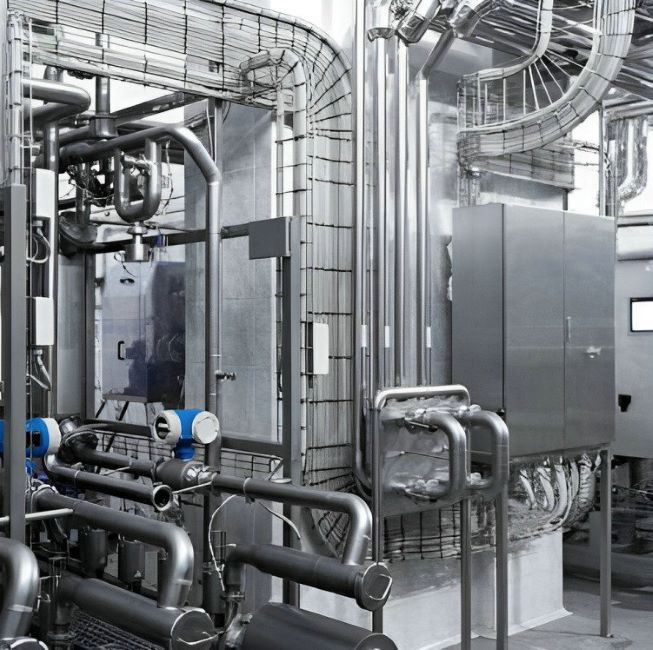
chemical production equipment
In chemical production equipment, the material needs to be able to resist a variety of corrosive media and chemicals. Due to its excellent corrosion resistance, 347 stainless steel bar can be used in harsh chemical environments for long periods of time without being affected. It can be used to fabricate a variety of chemical reactors, tanks, piping and other equipment to ensure the safety and reliability of the production process.
FAQ
The welding properties of 347 stainless steel bar are of significant importance when considering its applications in various industries. As a reliable and versatile material, 347 stainless steel bar exhibits favorable welding characteristics that contribute to its successful use in welding processes. Here is a detailed explanation of the welding properties of 347 stainless steel bar:
Weldability: 347 stainless steel bar demonstrates good weldability, which refers to its ability to be welded without significant issues or complications. It can be readily welded using common welding techniques such as shielded metal arc welding (SMAW), gas tungsten arc welding (GTAW), gas metal arc welding (GMAW), and submerged arc welding (SAW). The weldability of 347 stainless steel bar is attributed to its balanced composition and controlled carbon content.
Heat Affected Zone (HAZ) Performance: During welding, the heat affected zone (HAZ) adjacent to the weld can undergo changes in microstructure and mechanical properties. In the case of 347 stainless steel bar, it exhibits good resistance to sensitization and intergranular corrosion in the HAZ. This is due to the addition of niobium (Nb) in its composition, which forms niobium carbides, preventing the precipitation of chromium carbides and subsequent depletion of chromium near the grain boundaries.
Post-Weld Heat Treatment: 347 stainless steel bar can benefit from post-weld heat treatment (PWHT) processes, such as annealing or stress relieving, to optimize its properties after welding. PWHT can help reduce residual stresses, improve mechanical properties, and restore the material’s corrosion resistance. However, the specific PWHT requirements should be determined based on the application and the recommendations of the 347 stainless steel bar supplier or relevant welding standards.
Filler Metal Selection: The choice of filler metal is crucial in achieving high-quality welds with 347 stainless steel bar. Matching or closely matching filler metals with similar niobium content, such as ER347, is commonly recommended to maintain the desired properties of the base material. Consultation with the 347 stainless steel bar supplier or welding experts can provide guidance on appropriate filler metal selection for specific applications and welding processes.
Joint Design Considerations: Proper joint design is essential for successful welding of 347 stainless steel bar. The joint design should consider factors such as material thickness, welding position, and accessibility. Adequate preparation, including proper cleaning and removal of contaminants, is necessary to ensure sound and defect-free welds.
It is important to note that while 347 stainless steel bar exhibits favorable welding properties, it is always recommended to follow welding best practices, adhere to relevant welding codes and standards, and consult with the 347 stainless steel bar supplier or experienced welding professionals for specific welding procedures and recommendations. Their expertise can greatly assist in achieving reliable and high-quality welds with 347 stainless steel bar in various applications.
The machining properties of 347 stainless steel bar play a crucial role in determining its suitability for various machining operations. As 347 stainless steel bar supplier, it is important to understand the material’s machining characteristics. Here is a detailed explanation of the machining properties of 347 stainless steel bar:
Machinability Rating: 347 stainless steel bar has a moderate machinability rating. It can be machined using common machining processes such as turning, milling, drilling, and tapping. However, compared to some other stainless steel grades, 347 stainless steel bar may exhibit slightly lower machinability due to its higher strength and work-hardening tendency.
Cutting Tools: When machining 347 stainless steel bar, it is recommended to use cutting tools specifically designed for stainless steel machining. High-speed steel (HSS) or carbide tools are commonly used due to their hardness and wear resistance. The cutting tools should have sharp edges and be properly maintained to ensure optimal performance and surface finish.
Cutting Speeds and Feeds: Proper cutting speeds and feeds are essential for efficient and effective machining of 347 stainless steel bar. The cutting parameters should be selected based on the specific machining operation, tooling, and workpiece conditions. Higher cutting speeds and moderate feed rates are generally preferred, but it is important to avoid excessive heat buildup to prevent work hardening and tool wear.
Lubrication and Cooling: The use of appropriate lubrication and cooling methods is crucial during machining operations to reduce friction, heat, and tool wear. Lubricants, such as cutting oils or water-soluble coolant, can be applied to the cutting zone to improve chip evacuation, reduce tool temperature, and enhance surface finish. The 347 stainless steel bar supplier can provide recommendations on suitable lubricants for machining processes.
Work Hardening: Like many stainless steel alloys, 347 stainless steel bar has a tendency to work harden during machining. This means that the material becomes progressively harder and more challenging to machine as the cutting process continues. To minimize work hardening effects, sharp tools, appropriate cutting parameters, and proper cooling are essential.
Post-Machining Operations: After machining, 347 stainless steel bar may require additional operations such as deburring, polishing, or surface treatment to achieve the desired final appearance and dimensional accuracy. These post-machining operations should be carefully planned and executed to ensure the desired outcome.
It is important for the 347 stainless steel bar supplier to provide machining guidelines and recommendations specific to their product. Machining properties can vary depending on the specific manufacturing process and the supplier’s quality control measures. Therefore, collaborating with the supplier and utilizing their expertise can help optimize the machining process and achieve desired results when working with 347 stainless steel bar.
Stainless steel bars, including 347 stainless steel bar, are not typically used for molding purposes. Molding typically refers to the process of shaping materials through techniques like injection molding, casting, or forming.
347 stainless steel bar, being a solid metal bar, is primarily used in applications where its mechanical properties, corrosion resistance, and high-temperature performance are essential. It is commonly employed in industries such as aerospace, chemical processing, oil and gas, and power generation, where its strength, stability, and resistance to corrosion and high temperatures are critical.
To buy 347 stainless steel bar, you can follow the steps below:
Research and Identify a Reliable Supplier: Start by researching reputable stainless steel bar supplier that offer 347 stainless steel bar. Huaxiao Stainless Steel is a well-known supplier that specializes in providing various stainless steel products, including bars.
Contact Huaxiao Stainless Steel: Reach out to Huaxiao Stainless Steel through their website, email, or phone to inquire about the availability, specifications, and pricing of 347 stainless steel bar. Provide them with the necessary details such as the desired quantity, dimensions, and any specific requirements you may have.
Request a Quotation: Ask Huaxiao Stainless Steel to provide a quotation for the 347 stainless steel bar based on your requirements. They will typically provide you with a detailed quote that includes the price per unit, total cost, payment terms, and any additional charges or conditions.
Place an Order: If you are satisfied with the quotation and terms offered by Huaxiao Stainless Steel, proceed to place an order. Confirm the quantity, dimensions, and other specifications of the 347 stainless steel bar with the supplier. Provide any necessary documentation or information required for the purchase.
Remember to maintain clear communication with Huaxiao Stainless Steel Bar Supplier throughout the buying process to address any concerns or questions that may arise.
The main differences between 347 stainless steel bar and 304 stainless steel bar lie in their chemical composition and specific properties. As stainless steel bar supplier, including 347 stainless steel bar, Huaxiao Stainless Steel can provide more detailed information. Here is a general overview of the differences:
Chemical Composition:
- 347 Stainless Steel Bar: It contains higher amounts of chromium (Cr), nickel (Ni), and the addition of columbium (niobium, Nb) compared to 304 stainless steel bar. The composition typically includes 17-19% Cr, 9-13% Ni, and a small amount of Nb.
- 304 Stainless Steel Bar: It primarily consists of 18-20% Cr and 8-10.5% Ni, with no significant alloying elements.
Temperature Resistance:
- 347 Stainless Steel Bar: It offers improved high-temperature resistance compared to 304 stainless steel bar. The addition of Nb allows 347 stainless steel to withstand higher temperatures without significant loss of strength and resistance to sensitization.
- 304 Stainless Steel Bar: While it exhibits good general corrosion resistance, it is not specifically designed for high-temperature applications.
Sensitization Resistance:
- 347 Stainless Steel Bar: It has excellent resistance to sensitization, which is the formation of chromium carbides along the grain boundaries during exposure to elevated temperatures. The addition of Nb promotes the formation of niobium carbides instead of chromium carbides, preventing sensitization and intergranular corrosion.
- 304 Stainless Steel Bar: It can be susceptible to sensitization under certain conditions, leading to intergranular corrosion in aggressive environments.
Applications:
- 347 Stainless Steel Bar: Due to its high-temperature resistance and sensitization resistance, it is commonly used in applications where exposure to elevated temperatures and corrosive environments is expected. This includes industries such as chemical processing, petrochemical, and power generation.
- 304 Stainless Steel Bar: It is widely used in various applications where corrosion resistance and general-purpose performance are required, such as food processing, kitchen equipment, architectural components, and automotive parts.
It is important to consult with Huaxiao Stainless Steel Bar Supplier or refer to technical specifications for detailed information on the specific properties, applications, and limitations of 347 stainless steel bar and 304 stainless steel bar. They can provide comprehensive insights and assist in selecting the most suitable stainless steel bar for your specific needs.
The difference between 347 stainless steel bar and 316 stainless steel bar lies in their chemical composition and specific properties. As a supplier of stainless steel products, Huaxiao Stainless Steel can provide more detailed information. Here is a general overview of the differences:
Chemical Composition:
- 347 Stainless Steel Bar: It contains higher amounts of chromium (Cr), nickel (Ni), and the addition of columbium (niobium, Nb) compared to 316 stainless steel bar. The composition typically includes 17-19% Cr, 9-13% Ni, and a small amount of Nb.
- 316 Stainless Steel Bar: It consists of 16-18% Cr, 10-14% Ni, and 2-3% molybdenum (Mo), with no significant alloying elements.
Temperature Resistance:
- 347 Stainless Steel Bar: It offers improved high-temperature resistance compared to 316 stainless steel bar. The addition of Nb allows 347 stainless steel to withstand higher temperatures without significant loss of strength and resistance to sensitization.
- 316 Stainless Steel Bar: It exhibits good high-temperature resistance, primarily due to the presence of molybdenum, which enhances its corrosion resistance in chloride environments.
Sensitization Resistance:
- 347 Stainless Steel Bar: It has excellent resistance to sensitization, which is the formation of chromium carbides along the grain boundaries during exposure to elevated temperatures. The addition of Nb promotes the formation of niobium carbides instead of chromium carbides, preventing sensitization and intergranular corrosion.
- 316 Stainless Steel Bar: It has moderate resistance to sensitization, but it can be susceptible to intergranular corrosion in certain aggressive environments.
Corrosion Resistance:
- 347 Stainless Steel Bar: It offers good general corrosion resistance in most environments, including acids, alkalis, and chloride-containing solutions. It is particularly suitable for applications involving high-temperature and corrosive environments.
- 316 Stainless Steel Bar: It has excellent corrosion resistance, especially in chloride environments, making it widely used in marine, chemical, and pharmaceutical industries.
Applications:
- 347 Stainless Steel Bar: Due to its high-temperature resistance, sensitization resistance, and overall corrosion resistance, it is commonly used in applications such as chemical processing, petrochemical, and power generation.
- 316 Stainless Steel Bar: It is widely used in various applications where excellent corrosion resistance is required, including marine equipment, food processing, pharmaceuticals, and architectural components.
Please consult with Huaxiao Stainless Steel Bar Supplier or refer to their technical specifications for more detailed information on the specific properties, applications, and limitations of 347 stainless steel bar and 316 stainless steel bar. They can provide comprehensive insights and assist in selecting the most suitable stainless steel bar for your specific needs.
Get In touch
Ready to Elevate Your Projects? Dive into our Stainless Steel Collection and Submit Your Specifications Today!
Phone/WhatsApp/WeChat:
+86 13052085117
Email: [email protected]
Address: RM557, NO.1388 Jiangyue Road, Shanghai China


